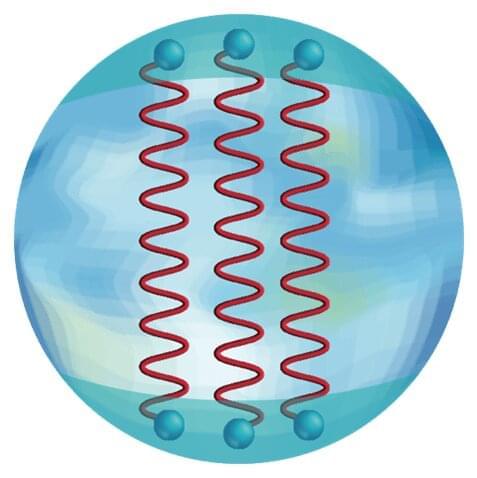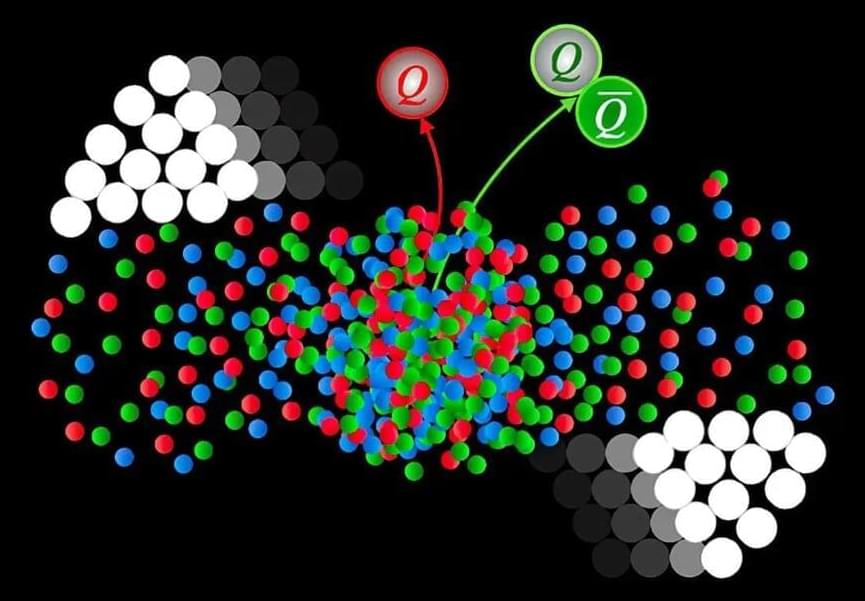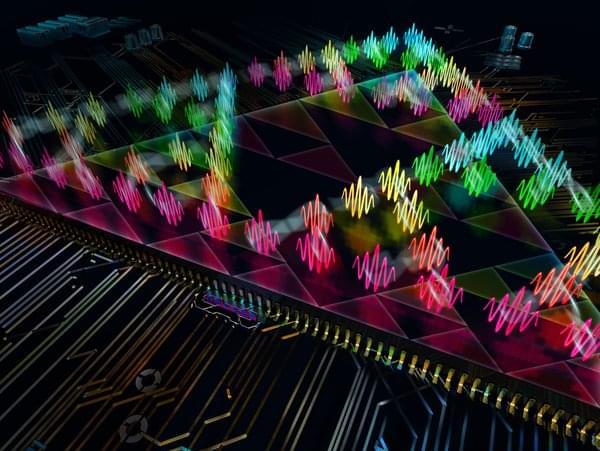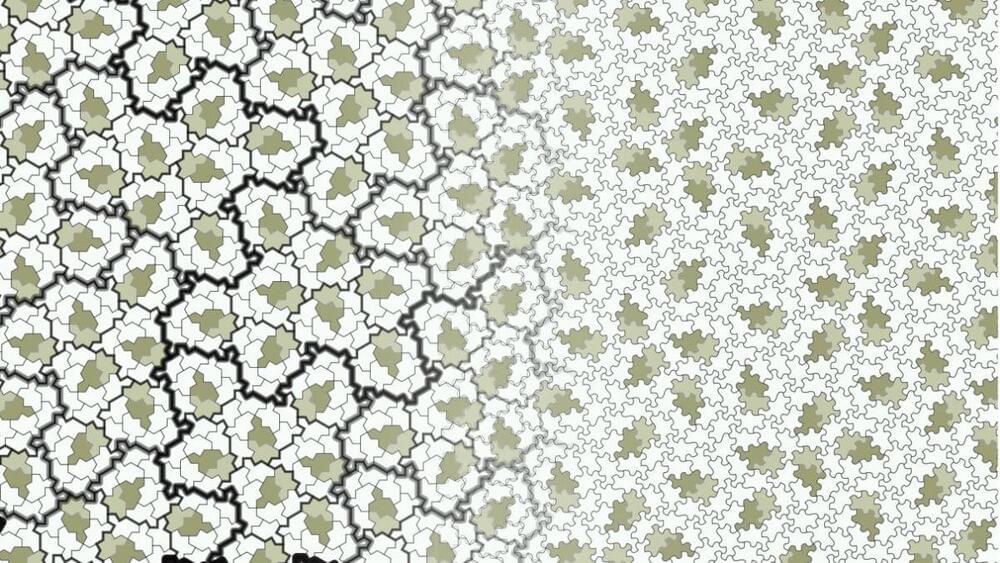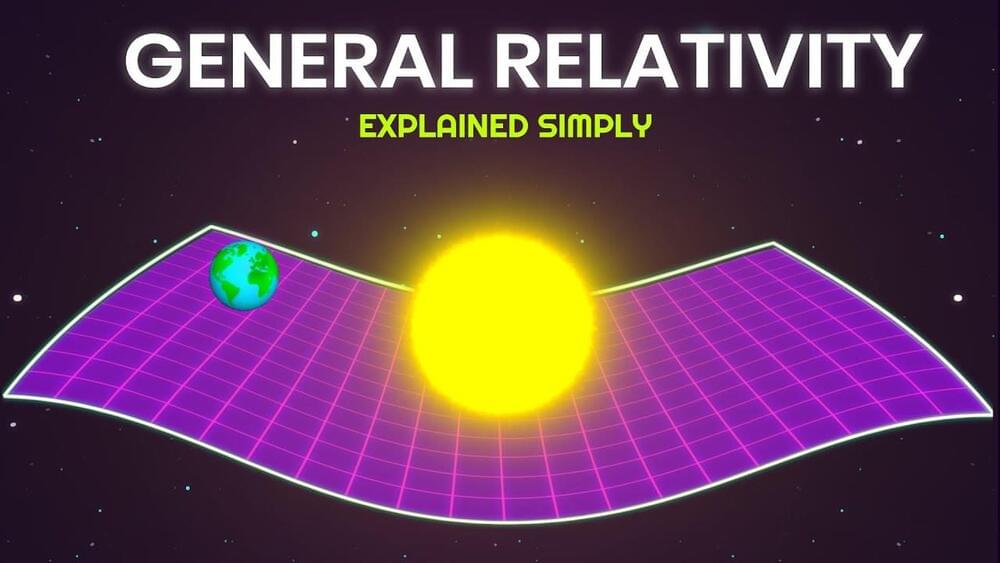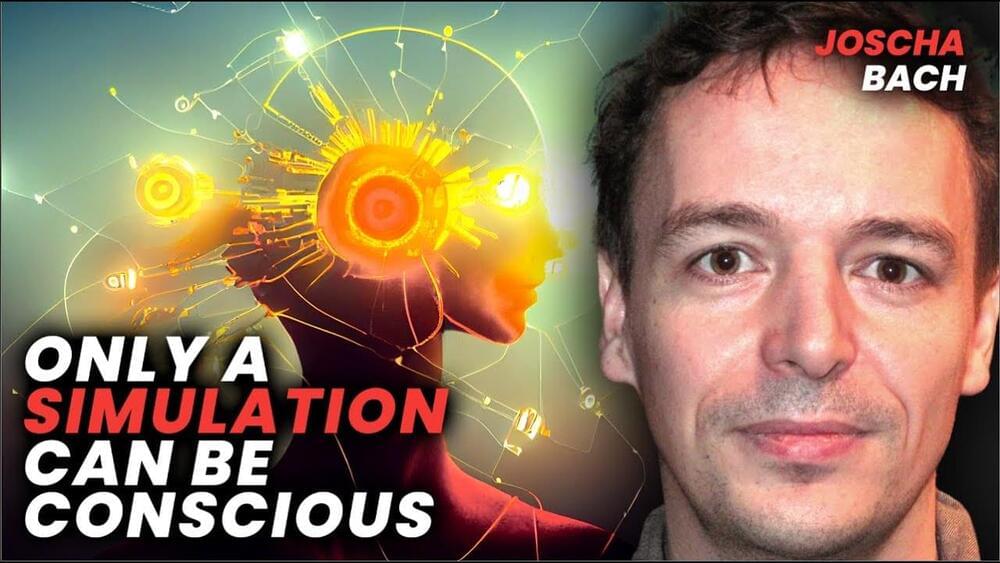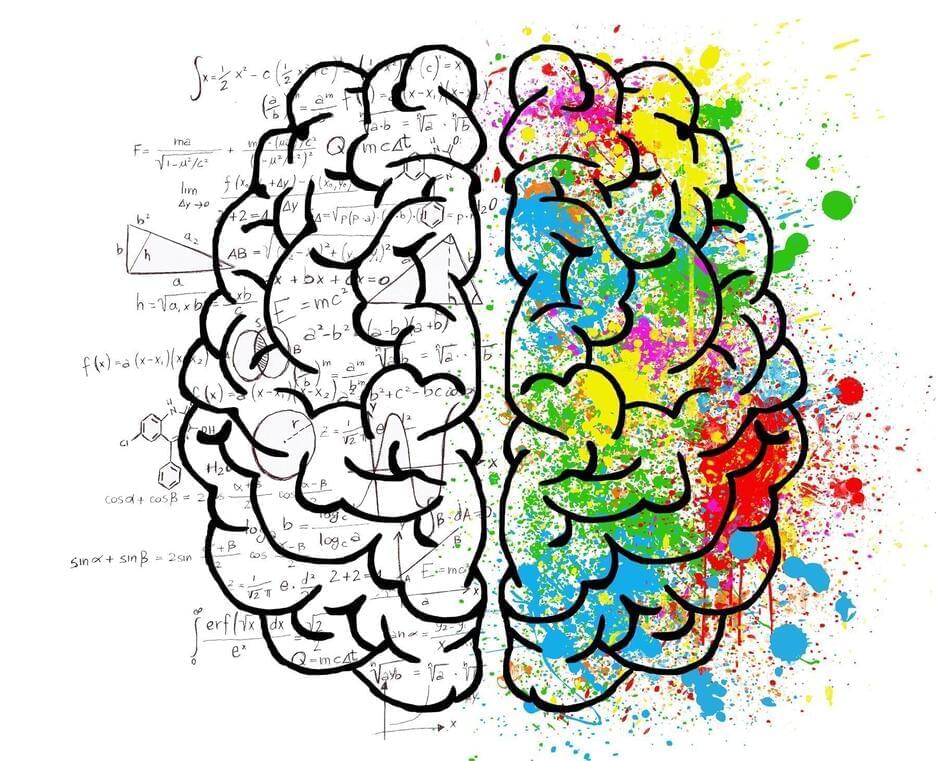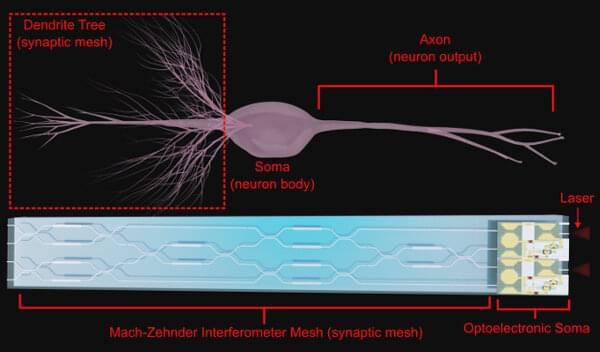Jun 12, 2023
A simple solution for nuclear matter in two dimensions
Posted by Paul Battista in categories: information science, mathematics, nuclear energy, particle physics, space
Understanding the behavior of nuclear matter—including the quarks and gluons that make up the protons and neutrons of atomic nuclei—is extremely complicated. This is particularly true in our world, which is three dimensional. Mathematical techniques from condensed matter physics that consider interactions in just one spatial dimension (plus time) greatly simplify the challenge.
Using this two-dimensional approach, scientists solved the complex equations that describe how low-energy excitations ripple through a system of dense nuclear matter. This work indicates that the center of neutron stars, where such dense nuclear matter exists in nature, may be described by an unexpected form.
Being able to understand the quark interactions in two dimensions opens a new window into understanding neutron stars, the densest form of matter in the universe. The approach could help advance the current “golden age” for studying these exotic stars. This surge in research success was triggered by recent discoveries of gravitational waves and electromagnetic emissions in the cosmos.
